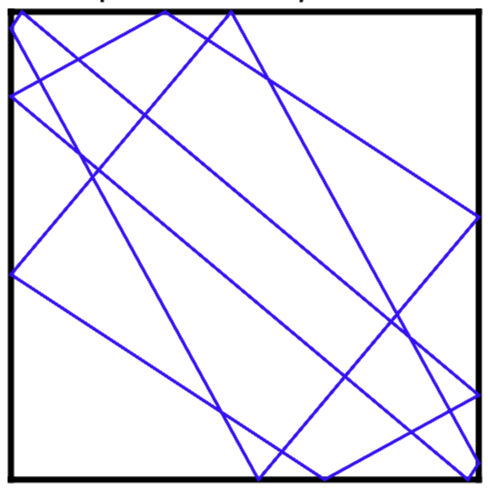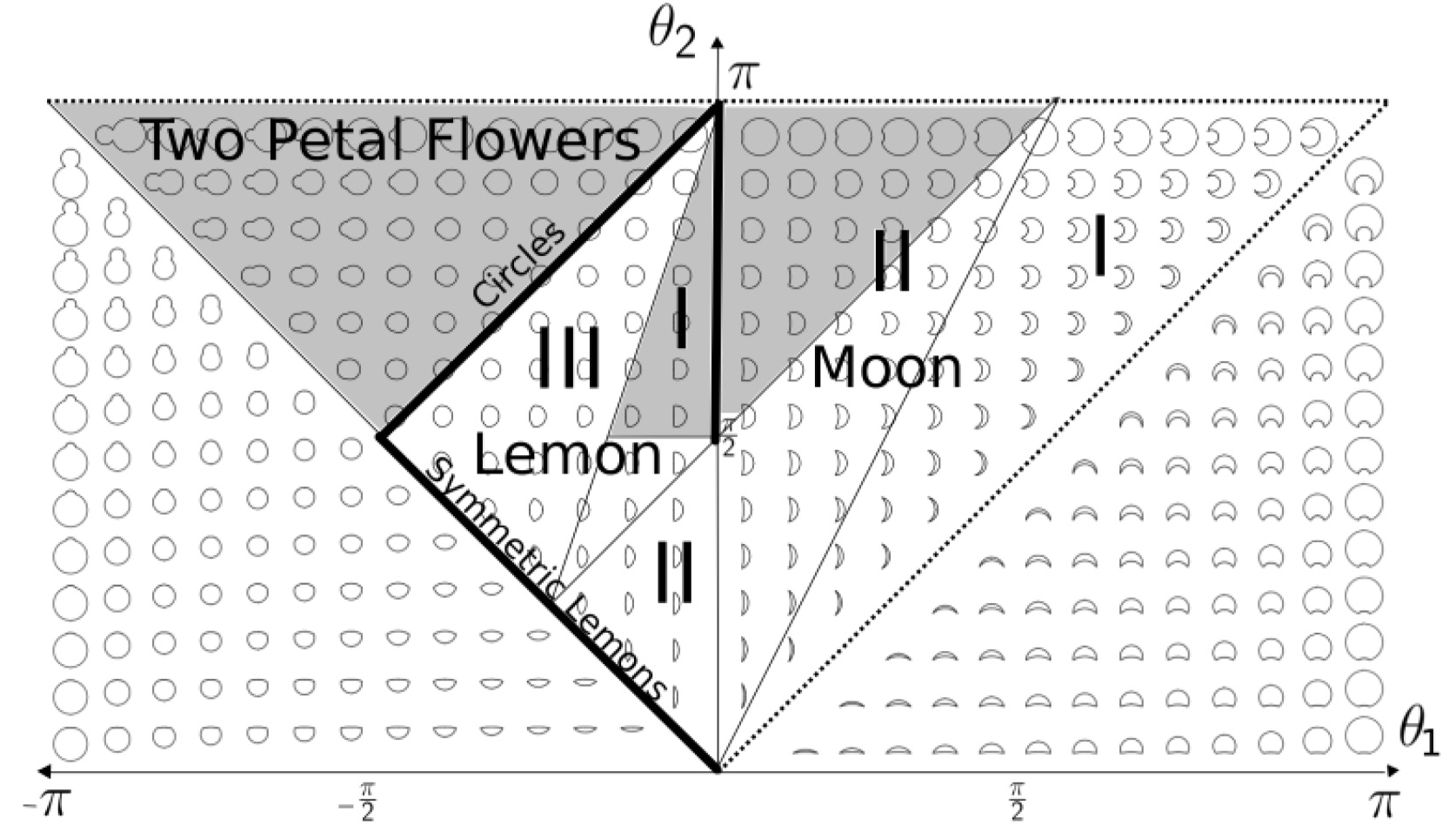Active Projects
Rolling systems and nonholonomic billiards

A sphere rolling on a surface (or other manifold, like the ray to the right) without sliding is an example of a nonholonomic system. While no-slip billiards are modeled without any explicit nonholonomic constraints, in Differential geometry of rigid bodies collisions and non-standard billiards (with Renato Feres ) we show that (at least in spirit) there is a certain affinity, as the natural physical assumptions on the collision map will ensure that it restricts to the identity on a certain non-slipping subspace. This idea was made more concrete in Rolling and no-slip bouncing in cylinders, with Feres, Scott Cook, and Tim Chumley, in which we show that small no-slip collisions very closely approximate the nonholonomic motion of a sphere rolling in a cylinder under an external force. Independently, Borisov, Kilin, and Mamaev partially bridged the no-slip/nonholonomic gap from the other side, showing that the two dimensional no-slip strip and ellipse emerge as limits of rolling systems respectively in an infinite cylinder and an ellipsoid. In Rolling systems and their billiard limits with Feres and Bowei Zhao, we extend this connection, showing that no-slip limits arise very generally as the small radius limit of nonholonomic rolling systems. Currently, we are interested in the dynamics of rolling systems; in particular, which distinctive features of no-slip billiards persist for positive radius rolling systems?
You can play around with some examples here.
The no-slip Galton board

Lorentz gases, modeled by billiard systems with an array of scatterers, were introduced as a model for ions moving in a metal over a hundred years ago, and the broadly applicable model is still actively studied. The ideal Galton Board, essentially a Lorentz gas with an external force, modeling a bean machine in which particles fall dispersed by scatterers, is also of mathematical interest. Neither of these models has been previously considered in the context of the no-slip collision model; indeed, as invariant regions preclude the ergodicity of standard Sinai billiard (see blue trajectories, left) analytic study becomes difficult. However, many questions can still be broached numerically, and in the Summer of 2019 Scott Cook and I led a team of undergraduates working at Tarleton State University developing python code to run simulations of no-slip billiards under an external force. Working with Tim Chumley, we are currently preparing the results from these experiments.
Past and Potential Student Research
Finding evidence of chaotic behavior in families of no-slip billiards

 The question of whether any ergodic no-slip billiard exists is still an open question. In a Sinai type no-slip billiard, we may reduce the size of the apparent elliptic islands by decreasing the size of the scatterer (left). However, tiny elliptic islands seem to persist, as the one to the right, on a scale of around 0.5 percent of the full phase portrait to the left. Numeric techniques including calculating Lyapunov exponents, which give a measure of the chaotic tendencies, have not yet been used but should shed more light on the picture.
The question of whether any ergodic no-slip billiard exists is still an open question. In a Sinai type no-slip billiard, we may reduce the size of the apparent elliptic islands by decreasing the size of the scatterer (left). However, tiny elliptic islands seem to persist, as the one to the right, on a scale of around 0.5 percent of the full phase portrait to the left. Numeric techniques including calculating Lyapunov exponents, which give a measure of the chaotic tendencies, have not yet been used but should shed more light on the picture.
Persistently periodic no-slip billiards
 Some no-slip wedges and and polygons display the curious property of persistent periodicity: no matter what the initial spin and velocity is, the orbit will be periodic. For example, for a no-slip equilateral triangle with uniform mass distribution particles, all orbits have period four or six. It is known that for uniform mass distribution, for any number n there is an angle such that the wedge has all (non-escaping) orbits periodic of period 2n. As of 2019, the equilateral triangle was the only known example for a closed polygon, but Tarleton graduate students Clayton Boone and Bishwas Ghimire independently found a mass distribution giving persistently periodic square (pictured) while in my modeling course. Bishwas continued working with me over the summer and used a numerical search algorithm to find a mass distribution giving a persistently periodic pentagon. There are a lot of open questions remaining and potential to continue this research.
Some no-slip wedges and and polygons display the curious property of persistent periodicity: no matter what the initial spin and velocity is, the orbit will be periodic. For example, for a no-slip equilateral triangle with uniform mass distribution particles, all orbits have period four or six. It is known that for uniform mass distribution, for any number n there is an angle such that the wedge has all (non-escaping) orbits periodic of period 2n. As of 2019, the equilateral triangle was the only known example for a closed polygon, but Tarleton graduate students Clayton Boone and Bishwas Ghimire independently found a mass distribution giving persistently periodic square (pictured) while in my modeling course. Bishwas continued working with me over the summer and used a numerical search algorithm to find a mass distribution giving a persistently periodic pentagon. There are a lot of open questions remaining and potential to continue this research.
Ergodicity of two arc specular billiards

In my work with Zhang and Correia on umbrella billiards, as an extension on their work on moon and lemon billiards, we start to fill in a picture of the ergodicity of the complete family of two arc billiards (right). It would be nice to revisit this and give a much higher resolution of this picture. A key to doing so would be to automate numerical tests for ergodicity; implementing these seems quite feasible and a worthwhile pursuit more generally, beyond merely the investigation of two arc billiards.